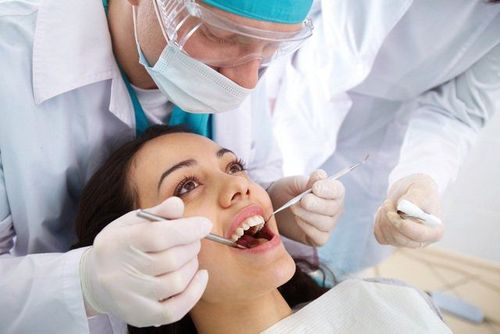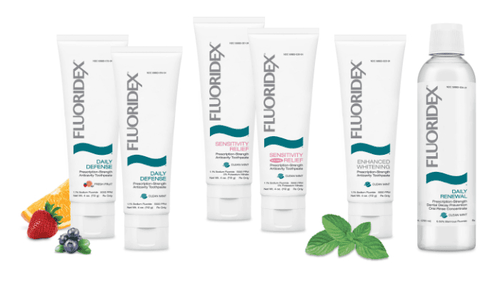This is an automatically translated article.
The article was professionally consulted with Specialist Doctor II Nguyen Khanh Nam - Doctor of Dental - Jaw - Facial - Department of General Surgery - Vinmec Nha Trang International General Hospital.Brushing teeth is everyone's daily routine, although it sounds so easy, very few of us actually brush our teeth properly. Here are 8 mistakes when brushing our teeth that we often make.
1. Wrong choice of toothbrush
Kimberly Harms, a dentist from Farmington says, make sure your brush can cover the areas that need to be covered. It's everywhere you can reach with a toothbrush. You can use an electric toothbrush or a manual brush. But there is an important rule that you should choose a soft bristle brush. The bristles remove bacteria and remove plaque from your teeth and gums. That plaque can cause gum disease and lead to tooth decay. Sometimes people think that the stiffer the bristles, the cleaner they are. But that is not the right thing. Soft bristles clean very effectively, much better than hard bristle brushes. Hard bristles can really wear down your tooth structure
The size of the brush head is also important, especially if you have a smaller mouth. The brush also comes in a variety of handle sizes and angles.
2. Using one brush for too long
This is a mistake when brushing teeth that many people make. Once you find a good toothbrush, sometimes it's hard to give it up. But when you see changes in the bristles - when they're discolored, bent, or look dirty, it's time to get a new brush. Change your toothbrush at least every 3 months. Also, don't share your brush with anyone else. When you're done brushing, hold the toothbrush upright and let it dry outdoors. Avoid leaving your toothbrush in an airtight container, where germs have a greater chance to grow.
3. Not brushing your teeth for enough time is a brushing mistake
Many people do not know what is the best time to brush their teeth? Experts say you should brush your teeth at least twice a day, for 2 minutes each time. Although it may seem like a long time, you should brush your teeth for 2 minutes and 30 seconds in each quadrant of your mouth. However, if you're in a hurry to get to school or work late, you'll occasionally shorten your brushing time, which may not clean your teeth and remove all food and plaque. So try to improve this situation by trying to set a timer or distract yourself by humming your favorite tune for 2 minutes to ensure brushing time.

4. Brushing too hard
There is a misconception that brushing harder will remove more food particles and bacteria, but gentle brushing is all that is needed. Brushing too hard can wear away enamel and gums and cause tooth sensitivity. If the bristles are loose, you are brushing too hard.
5. Brush your teeth right after eating
If you feel the need to clean your teeth after eating or drinking, wait at least 60 minutes before brushing, especially if you've drunk something acidic like lemon, grapefruit or soda.
Right after you eat you have acid in your mouth and if you brush your teeth right away you are using an abrasive, which helps the acid eat away at your teeth. You should wait a long enough time for the saliva in your mouth to do its job with the acid before using more abrasives in toothpaste to clean your teeth. Drinking water or chewing sugar-free gum can help clean your mouth while you wait to brush your teeth.
6. Brush your teeth too often or too little
Dentists recommend brushing your teeth twice a day, once in the morning and once before going to bed. Brushing once a day is not enough and three times a day is too much. If you're concerned about keeping your teeth clean between brushings, try flossing to clean between brushings.
Not flossing isn't a brushing mistake, but it's a big mistake for your oral hygiene. Brushing can only reach certain parts of the tooth and requires flossing to clean the teeth thoroughly. If you're not used to daily flossing, start with the intention of flossing one or two teeth. Finally, you will try to floss to prevent tooth decay and bad breath.
7. Incorrect brushing technique
When you were young, you often had cavities on the top of your teeth. Therefore, you are often taught to brush your teeth in that area. As an adult, the most important areas to brush are along the gum line, between the teeth, and the back of the teeth. Brushing should be done at a 45-degree angle, along the gum line with a particular focus on the molars.
Here's a technique to try to brush your teeth properly: First, place your brush at a 45-degree angle to your gums. Then, gently move the brush back and forth along the gum line (by tooth width). Next, brush the outer, inner and chewing surfaces of the teeth. Finally, to clean the inner surfaces of the front teeth, tilt the brush vertically and make multiple up and down strokes.

8. Not cleaning your tongue is a mistake when brushing your teeth
Tongue is home to many bacteria and is often the cause of bad breath. When you're done brushing, use a tongue scraper to clean your tongue or brush your tongue with a toothbrush. This will reduce the number of germs in your mouth and improve your breath. In short, the mistake of brushing teeth is one of the main causes of dental diseases. Learning and practicing proper brushing will help you prevent and improve oral health.
Please dial HOTLINE for more information or register for an appointment HERE. Download MyVinmec app to make appointments faster and to manage your bookings easily.
References: webmd.com, doctorsaylor.com, mouthhealthy.org













